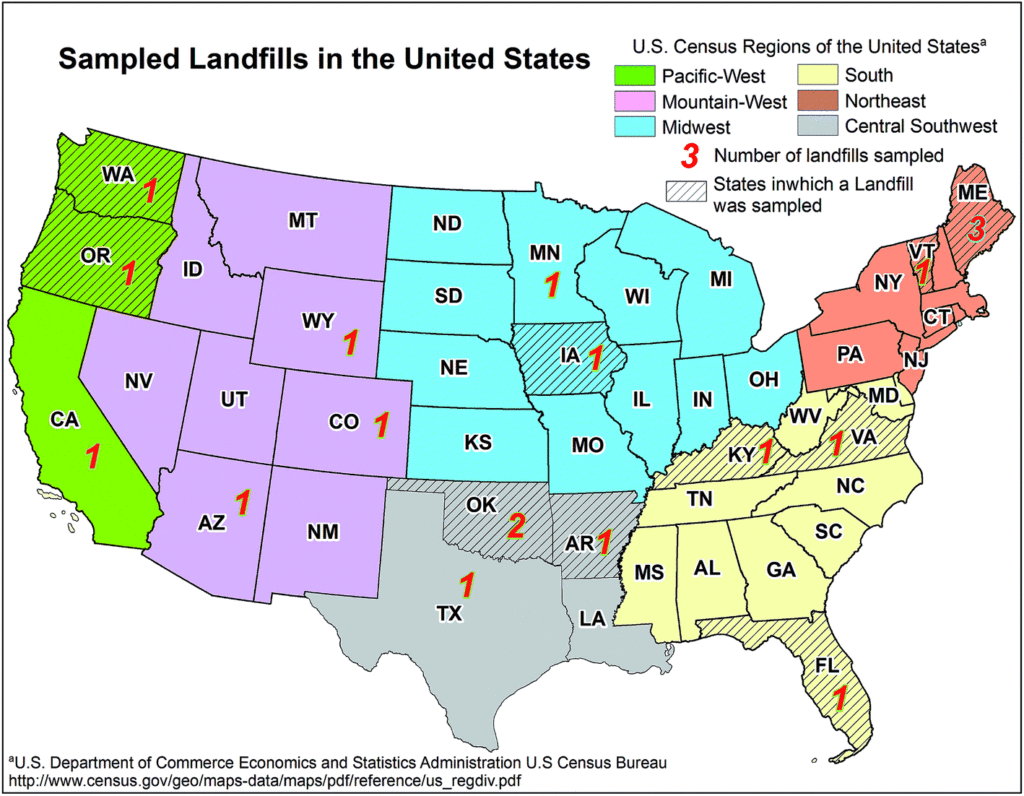
A landfill is a site where discarded solid waste can be disposed of, and it is often referred to as a dump or a rubbish tip, siting where solid waste is collected and disposed. The waste is often brought by dumpster rental or lifted by crane or a bulldozer.
Though landfills are sometimes used as a method of disposing of solid waste, other techniques are available. Recycling is an alternative that prevents soil and environmental pollution, conserves natural resources and is easier for landfills and incineration.
According to the results of an EPA survey in the U.S. in 1989, approximately 11 million tons of toxic waste were disposed of in landfills, which did not include industrial waste. That same year, 17.4 million tons of solid waste were sent to landfills.
Good Practices Of Us Landfill Management
The U.S is currently facing a serious issue of landfills which are reaching max capacity. Some of the good practices of landfill management include (1) compactors are used to reduce the volume of waste, (2) the waste is segregated by material, then (3) the hazardous material is segregated again into the category of hazardous waste.
The active life of a landfill is divided into periods of 5-10 years called as Phases where the waste is covered with dirt, and the land is considered inactive. Composting the waste to create rich soil to dig a new landfill.
Challenges Faced By Us Landfill Management
Landfills are an integral and important part of the waste management in the US. There are about 4,600 landfills operating in the US and about 10% of the nation’s trash is deposited to the landfills.
Landfills have been the preferred method of waste disposal in the US since the 1930s, when the first sanitary landfill was opened. Until recently, they were also believed to be a solution to the growing waste, as they can accommodate trash for long periods of time. In the last few years, however, many landfills have started to close down.
Innovative Solutions To Solve Us Landfill Issues
Landfills are the final resting place for all things we throw away, from broken appliances to banana peels. In 2014, US citizens generated about 254 million tons of trash that year—about 4.4 pounds of garbage per person, according to the US Environmental Protection Agency (EPA). Although it may sound gross, much of that trash is an essential ingredient in making compost, the nutrient-rich soil amendment that can help grow an even more sustainable tomorrow.
What Is The Landfill Situation In The US
The United States alone produces about 250 million tons of trash, according to the Environmental Protection Agency (EPA). Most of the trash produced by the US ends up in landfills via dumpster rentals. Landfills have been around since the 1950s to help dispose of trash, but recently, they have started to run out of space in landfills, so the US is now looking for new ways to dispose of trash.
In the past, Americans used to throw different types of trash in one bin, but now, they separate the trash into different categories which makes it easier to dispose of. They are trying to find ways to produce less trash and find new ways to dispose of trash.
What Happens To Recyclable Materials In The United States
When it comes to recycling in the United States, single-stream systems are used, in which recyclable of all kinds are thrown into same bin to be cleaned and sorted at recycling facilities.
How Does Landfills Work
A landfill is a disposal site where trash is buried in layers. A landfill is the last resort for waste materials that cannot be recycled, burned for energy recovery or converted into another usable product. As a general rule, anything that is either biodegradable (decomposable by bacteria) or flammable can be disposed of in a landfill, sometimes renting a dumpster to bring all the junk to the nearest landfill.
When a landfill is being built, planners have to account for future population growth, land subsidence (settling of the ground), and for the weight of covering soil and material. To ensure that materials stay in place, large cells are divided by walls.
The walls are made from a variety of materials and are designed to be strong enough to support the weight of the covering soil and the waste. If a landfill fails, the trash and other materials can be pushed over the sides of the landfill and cause a mess.